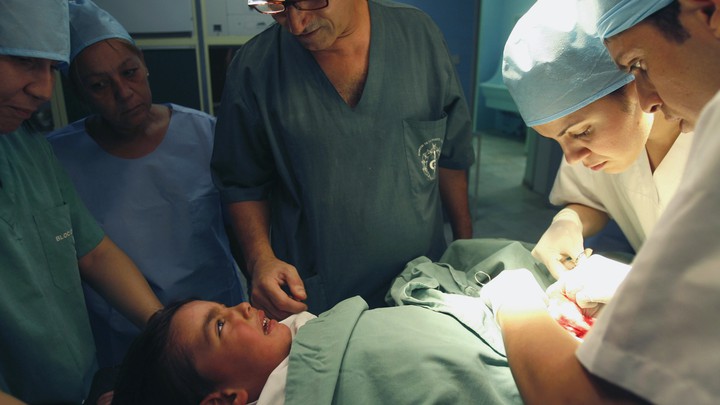
Risks Connected with Circumcision
A circumcision Melbourne instrument is a device used for the first procedure and then is used to keep the glans and the shaft of the penis clean. Ordinarily, these tools can be divided into two classes: electrocauterization and plastibolinization. Electrocauterization uses a taser (in contemporary devices) to make the swelling in the corona of the penis reduction over time so that a tiny hole is created for the mind to slip into. Plastibolinization uses liquid nitrogen to freeze the end of the penis so that it will not shrink back.

Risks Connected with Circumcision
Both of these methods have many similarities, however, there are also important differences. Electrocauterization demands using an electric current and is often more debilitating than plastibolinization. Plastibolinization is easier on the body, does not require any pain, and might be less expensive too. In addition to these differences, plastibolinization is much less prevalent as Electrocauterization. However, in some specific countries, plastibolinization is the sole method used to circumform infants.
Risks Connected with Circumcision
Another tool widely utilised in the circumcision process is a retractor. This piece of equipment is essentially a band that’s worn around the mind of the kid. The band is placed above his head and is held in place by rubber. The kid is put in cold water to induce out the ring, which he needs to do three times before he’s released.
Risks Connected with Circumcision
Once this has been done, the ring is removed and a new one put on top of your mind. This procedure is repeated until all the skin was taken out of the head. Afterward, the new one is attached. This may take around half an hour. But a small discomfort may be experienced, and the child is invited to relax during the process.
- The ring may be eliminated and a new one put on top of the mind. During the entire procedure, a fabric cuff may be set on the forehead of the child. This keeps the blood flowing into the region where it’s needed. In case the kid is nervous, nevertheless, he can be given a pacifier to calm him down.
If the whole process is effective, the child will visit a doctor and be discharged home. If the child is having trouble breathing or feels uncomfortable, nevertheless, an ambulance must be called. Emergency medical services are available at most hospitals.
Circumcision might not always be mandatory. When a baby has a naturally tight foreskin, eliminating it if he is approximately six weeks of age may prevent an infection. The health care provider may also go for a”coercive procedure” This is when the physician uses his hands to lower the foreskin of the infant. In case the child is not comfortable with the notion of getting his genitals cut on his own, then he could have his genitals reduced or taken away by a parent if he’s born. This choice should be considered if the child is extremely small or if he shows no signs of having discomfort following the operation.
The outcomes of a circumcision are rarely permanent. Most physicians recommend that the child ought to be discharged home to parents, that must take care of him for around a week or two. The stitches will eventually lose their effectiveness and the child can be released to home. Most doctors also suggest repeating the procedure as the child grows. Repeat sessions shouldn’t be done more often than once every few months to avoid the potential for scarring.
A child may experience some discomfort and pain following his first circumcision. Fortunately, most parents see that the wound is healing well in a few days, leaving little discomfort for the child. Some parents may choose to put ointments or creams on the area to help ease the pain, though it is necessary to seek the advice of your health care provider before doing so.
There are also risks of complications, such as infections and bleeding. Bleeding may occur if an excessive amount of blood is drawn throughout the process. Additionally, there might be infections due to the sharp edges of the surgical instruments used. These infections may cause the child to come up with scar tissue around his manhood. Such complications may require further treatment from a physician.
Circumcision is safe when performed by a physician who’s well-trained in performing such surgeries. Parents should find out more about the different dangers associated with each technique to find out which is perfect for their child. Once you’ve made the choice to circumform your kid, he’ll now should trust you with his most private info. He’ll have to accept the risks associated with the process and trust you to manage them. This is a significant decision that should not be taken lightly by either parent.
